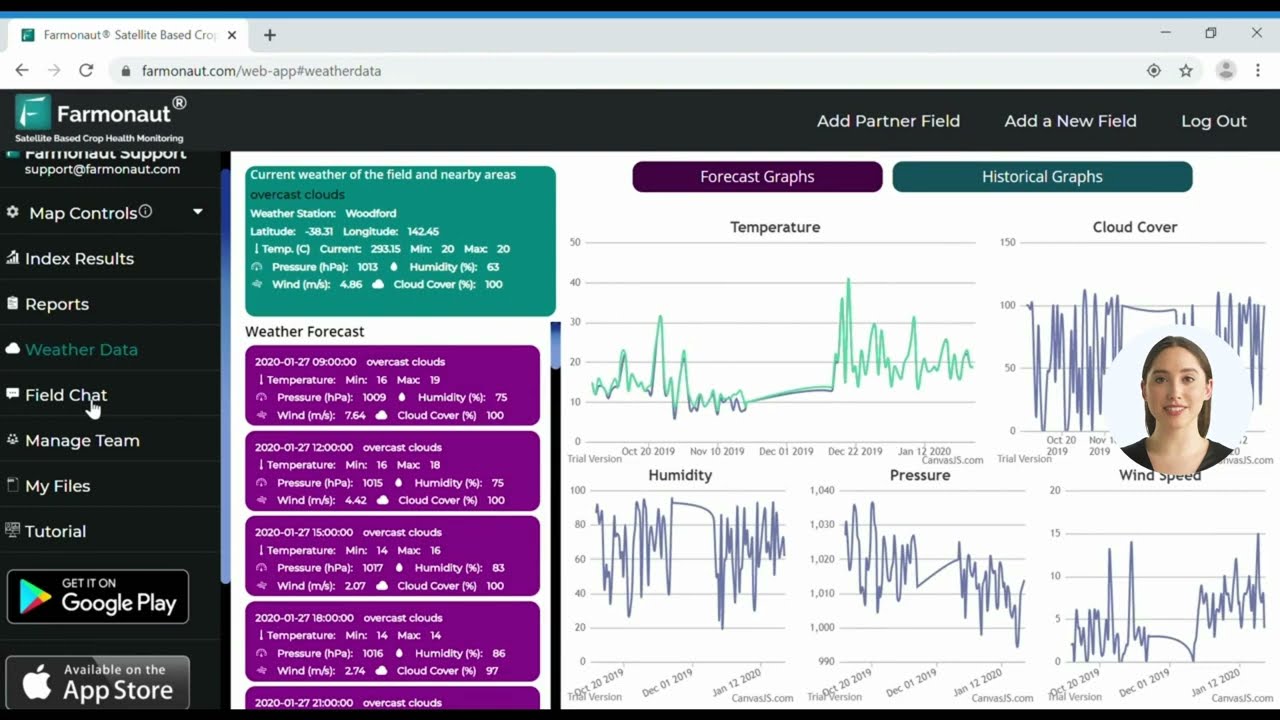Iron Sulphate for Grass: 6 Top Fertilizers & Ironite Guide
“Iron sulphate increases grass chlorophyll production by up to 40%, promoting greener lawns and sustainable turf management.”
Introduction: Iron Sulphate for Grass and Sustainable Field Management for 2026 & Beyond
In the evolution of modern agriculture and sustainable farming practices, iron sulphate for grass stands out as a critical tool in boosting soil health, crop productivity, and environmental stewardship. Along with sulphate of potash fertilizer, zinc sulphate fertilizer, Ironite, copper sulphate fungicide, and polysulphate, these fertilizers and soil amendments form the foundation of nutrient-balanced, sustainable agriculture for years ahead.
Optimizing fertilizer application in the face of climate variability and rising environmental concerns is now far more sophisticated, thanks to a precise understanding of plant nutrients and leveraging cutting-edge technology—like satellite-driven solutions from organizations such as Farmonaut. This comprehensive guide will cover the science, application methods, benefits, and comparative strengths of the six top fertilizers, focusing heavily on iron sulphate for grass and Ironite for grass, while embedding sustainable best practices suitable for 2026 and beyond.
The Role of Mineral-Based Fertilizers in Grass and Crop Productivity
Mineral-based fertilizers have become indispensable for modern agriculture due to their ability to rapidly address soil nutrient deficiencies, promote crop health, and boost yields without excessive reliance on organic amendments. Iron sulphate, Ironite, sulphate of potash fertilizer, zinc sulphate fertilizer, copper sulphate fungicide, and polysulphate address specific nutrient or protection needs in pasture grasses, croplands, hay fields, and even turf. They support the development of resilient, sustainable farming systems that can flourish in varied soil conditions.
- Iron Sulphate for Grass: Combat iron chlorosis, improve chlorophyll production, and fortify grass color and density.
- Ironite: Merge slow-release iron with additional micronutrients for broad-spectrum pasture and turf health.
- Sulphate of Potash Fertilizer: Deliver chloride-free potassium and sulfur for water regulation, crop resilience, and seed/fruit quality.
- Zinc Sulphate Fertilizer: Resolve zinc deficiency, supporting enzyme function and root growth.
- Copper Sulphate Fungicide: Dual-acting as a micronutrient and fungicide for overall plant protection.
- Polysulphate: Supply multi-nutrients (K, Mg, Ca, S) for holistic soil and crop enhancement.
For farmers readying fields for 2026 and beyond, understanding these specialized fertilizer roles and application methods is crucial for building resilient, high-yielding, and sustainable agricultural enterprises.
“Sulphate of potash fertilizer can boost crop yield by 20% while maintaining soil ecological balance for long-term sustainability.”
Iron Sulphate for Grass: Function, Application & Benefits
Why Iron Sulphate is Critical for Grass Health
Iron sulphate (ferrous sulfate) represents a cornerstone of grass nutrition. Iron is a micronutrient essential for chlorophyll formation, photosynthesis, and enzyme functioning in all plants, but it’s particularly vital for temperate and acidic soils where iron availability is limited due to chemical fixation. This limitation leads to a common condition known as iron chlorosis, where grass and pasture plants display yellowing leaves and poor growth, impacting pasture productivity and seasonal yields.
Main Functions of Iron Sulphate for Grass
- Stimulates Chlorophyll Production: Corrects chlorosis by enabling chlorophyll synthesis, resulting in greener, healthier sod.
- Supports Enzyme Function: Facilitates plant metabolism and promotes efficient nutrient uptake.
- Promotes Nitrogen Fixation: Indirectly enables legume-based pastures to fix atmospheric nitrogen, boosting forage quality.
- Controls Moss in Lawns: Nightly iron sulfate sprays are often used as a moss suppressant in turf management.
How and When to Apply Iron Sulphate for Grass
- Foliar Spray: Delivers rapid correction of visual deficiency symptoms—mix 3–5 g/L of water and spray late afternoon for best absorption.
- Soil Amendment: Broadly applied at 30–50 kg/ha for grasslands and hay fields, preferably before rainfall or irrigation.
- Application Frequency: Up to 3–4 times per season or as dictated by soil health monitoring platforms like Farmonaut (learn more about large scale farm management).
Benefits to Soil Health and Environmental Stewardship
- Low Risk of Accumulation: Iron binds to soil and isn’t prone to groundwater leaching, encouraging sustainable application.
- No Chloride Contamination: Safe for drought-prone regions.
- Improved Grass Vitality: Greener, thicker sod means less erosion, more forage production, and improved ecosystem health.
Ironite for Grass: Extended Solution for Greener Lawns
Ironite is a branded, commercial iron-rich soil conditioner that combines iron sulphate with additional micronutrients and humic acids to create a slow-release formulation. It is especially valued for demanding turf management, hay field management, and pasture grazing systems.
What Sets Ironite Apart?
- Slow-Release Iron: Steadier nutrient delivery reduces risk of leaching and overdose.
- Micronutrient Blend: Contains copper, manganese, zinc, and other trace elements crucial for overall grass health.
- Humic Acid Inclusion: Improves soil structure, microbial health, and nutrient retention.
Ironite Application Methods and Recommendations
- Broadcast Application: Typically applied at an estimated 50–100 g/m², or as per local turf guidelines.
- Best Use: Ideal for golf courses, sports fields, grazing pastures, and visually intensive lawns.
- Seasonal Guidelines: Spring and late summer applications foster resilience during growth peaks and drought.
Benefits to Farmers and Sustainable Cropping Systems
- Reduces Reapplication Frequency: Owing to slow-release technology, fewer passes are needed.
- Enhances Forage Nutritional Value: Livestock on iron-rich forage achieve better weight gains and improved immune profiles.
- Soil Health: Boosts microbial activity and improves physical soil structure for root establishment.
- Supports Regenerative Practices: Ironite’s nutrient synergy aligns well with carbon footprint tracking and regenerative agriculture goals.
Sulphate of Potash Fertilizer: Potassium & Sulfur for Sustainable Growth
Why Potassium and Sulfur Matter in Grasslands and Crops
Potassium is a macronutrient that plays a pivotal role in water regulation, enzyme activation, drought resistance, and overall crop health. Sulphate of Potash fertilizer (also known as SOP) delivers potassium in the non-chloride sulphate form, making it the preferred choice for drought-sensitive, high-value crops and all types of pasture systems—especially where chloride-sensitive plants such as certain vegetables and fruits are grown.
Key Functions and Application of Sulphate of Potash Fertilizer
- Disease Resistance: Adequate potassium supports plant defenses against fungal diseases.
- Drought Stress Buffer: Potassium improves water use efficiency and turgor in grass cells.
- Better Seed, Root, and Fruit Formation: Especially important in high production fields.
- Sulfur Source: Sulfate form also supplies sulfur, critical for protein formation and chlorophyll synthesis.
Optimal Application Practices for SOP
- Soil Application: 50–100 kg/ha for cereals, grasslands, and specialty crops depending on soil potassium status.
- Top Dressing: More common in high-yield and forage grazing systems, often synchronized with soil or field health monitoring.
- Compatibility: Suitable for integrated application with other fertilizers (e.g., blended with nitrogen or phosphate for a balanced formula).
Benefits for Environment and Sustainability
- Chloride-Free: Reduces salinity buildup in soil, protecting long-term soil ecological balance.
- Minimal Leaching: Because SOP is non-volatile and less mobile, it’s environmentally safe in areas with high rainfall or irrigation.
- Supports Carbon Sequestration: Healthy root systems, encouraged by potassium and sulfur, increase organic matter in soil.
Zinc Sulphate Fertilizer: Tackling Zinc Deficiency in Soils
A staggering portion of the world’s arable soils are zinc deficient, particularly alkaline and calcareous fields in regions of North America, Asia, and Australia. Zinc sulphate fertilizer presents a highly bioavailable form of zinc to correct and prevent these deficiencies, resulting in improved plant growth, enzyme function, and overall crop yield.
Signs of Zinc Deficiency in Grass and Crops
- Leaf Interveinal Chlorosis: White/yellow bands between veins on younger leaves.
- Stunted Growth and Poor Root Development: Unthrifty seedling and less robust pasture stands.
- Delayed Maturity and Poor Grain/Seed Formation:
How to Apply Zinc Sulphate Fertilizer Effectively
- Soil Incorporation: 20–30 kg/ha (as ZnSO4·7H2O), tilled in before sowing.
- Foliar Application: 0.5–1% solution (5–10 g/L) as a foliar spray on established grasses—useful where real-time crop health advisory detects acute deficiency.
- Seed Treatment: Effective in promoting early seedling vigor and minimizing deficiency risk.
Benefits for Sustainable Agriculture
- Increases Root Strength: Zinc fortifies grasslands against drought stress, making for resilient pastures.
- Boosts Protein Synthesis and Crop Quality: Particularly in high-quality forage crops grown for hay or grazing.
- Reduced Environmental Footprint: Small application amounts, targeted by fleet management logistics, minimize wastage and maximize nutrient efficiency.
Copper Sulphate Fungicide: Crop Protection & Soil Health
As a dual-function input, copper sulphate acts both as a micronutrient fertilizer and an effective fungicide. Its role in food production and forage protection continues to grow alongside sustainable farming awareness.
Copper Sulphate as a Fungicide: Key Uses
- Foliar Sprays: Controls rust, mildew, leaf spots, and other fungal diseases threatening grass, cereals, and broadleaf crops.
- Seed Treatment: Provides initial disease protection for newly sown pasture or field crops.
- Soil Amendment: Applied at 5–15 kg/ha based on soil analysis; too much copper can be harmful, so precision management is vital.
Microbial & Soil Benefits
- Essential for Photosynthesis and Enzyme Function: Copper acts as a cofactor in key reactions for healthy crop growth.
- Moderate, Responsible Use: Prevents copper build-up, balancing disease resistance without harming soil ecosystem services.
- Part of Integrated Pest Management (IPM): Recommended by many sustainable farming systems as a low-risk, broad-spectrum protectant.
Polysulphate: Multi-Nutrient Fertilizer for Modern Sustainable Farming
Polysulphate is a naturally-mined, multi-nutrient fertilizer increasingly popular with farmers and agronomists aiming to reduce synthetic input reliance in 2026 and beyond. It contains four vital nutrients: potassium (K), magnesium (Mg), calcium (Ca), and sulfur (as sulphate, SO₄²⁻)—all in sulfate forms that are readily bioavailable to plants.
Top Benefits of Using Polysulphate
- Multi-Nutrient Formula: Combines essential macronutrients for grass, cereal crops, and vegetables in a single dose.
- Extends Nutrient Availability: Slow-release profile supports crops over extended periods, optimizing use efficiency and minimizing losses to the environment.
- Improved Plant Structure: Calcium and magnesium strengthen cell walls and root systems, supporting resilience.
- Environmental Benefits: Naturally low chloride and minimal processing make this option carbon efficient and suitable for sustainable systems.
Application Recommendations
- Grass and Pasture: 100–150 kg/ha at establishment, followed by 50–70 kg/ha maintenance doses.
- Row Crops and Specialty Crops: Adjust rates according to plant-specific needs and soil health data.
Why Polysulphate Matters for 2026 and Beyond
- Part of Sustainable, Regenerative Schemes: Helps meet carbon footprint reduction targets by reducing the need for synthetic, energy-intensive NPK fertilizers.
- Supports High-Tech Monitoring: Easily integrated with digital ag-tech platforms for maximum benefit.
Fertilizer Comparison Table: Iron Sulphate, Ironite, Sulphate of Potash & Zinc Sulphate
For better decision-making, here is a structured comparison of the leading fertilizers and their fit for sustainable grass and crop management:
| Fertilizer Name | Main Nutrients (%) | Est. Application Rate | Primary Crop/Grass Benefit | Soil Health Impact | Environmental Sustainability | Approx. Cost ($/kg) |
|---|---|---|---|---|---|---|
| Iron Sulphate | Fe: 19–20% | 30–50 kg/ha 3–5 g/L (foliar) |
Corrects iron chlorosis, greener sod, moss control |
Improves chlorophyll, low salt risk |
Low leaching, sustainable |
$0.5–$2 |
| Ironite | Fe: 4.5%, N: 1%, P: 0.4%, K:0.4%, Micronutrients, humic acid |
50–100 g/m² | Greener lawns, slow-release root & leaf health, sports turf |
Enhances structure, microbial activity |
Fewer apps, reduced runoff |
$4–$10 |
| Sulphate of Potash (SOP) | K2O: 50%, SO4: 18% |
50–100 kg/ha | Boosts yield, resistance, quality |
Low salinity risk, supports roots |
Eco-friendly, chloride-free |
$0.9–$1.5 |
| Zinc Sulphate | Zn: 20–22% | 20–30 kg/ha 0.5–1% foliar |
Corrects Zn deficiency, improves seed, root |
Stronger pastures, supports protein & enzyme function |
Efficient, targeted application |
$1–$2 |
*Application rates and prices may vary by soil condition, product formulation, and region. Always refer to local agronomy guidelines for best results.
Farmonaut’s Role in Sustainable Nutrient Management
At Farmonaut, we understand that the sustainable use of fertilizers like iron sulphate for grass, Ironite, sulphate of potash, zinc sulphate fertilizer, copper sulphate fungicide, and polysulphate depends on accurate, real-time data and intelligent advisory tools. Leveraging our satellite imagery, Jeevn AI advisory, and blockchain traceability, we empower farmers and businesses to:
- Monitor soil nutrient status and crop needs remotely via satellite-based apps
- Integrate satellite APIs and developer tools for large-scale, data-driven resource management
- Track and document fertilizer use with blockchain for transparent supply chains
- Access environmental monitoring features, such as carbon footprinting
- Streamline loan or insurance verification via satellite-based reporting
- Optimize logistics and minimize input waste via fleet management solutions
Our aim is to democratize satellite-driven nutrient management and resource tracking for farmers, agronomists, businesses, and governments worldwide—making precision agriculture and sustainable farming truly achievable as 2026 and future years demand efficiency, transparency, and environmental care.
FAQ: Iron Sulphate, Ironite & Beyond
What is the main difference between iron sulphate for grass and Ironite for grass?
Iron sulphate for grass provides a quick-acting, highly effective solution to iron deficiency and is often used for rapid green-up and as a moss control agent. Ironite for grass is a slow-release commercial conditioner that combines iron with additional micronutrients and humic acids for longer-lasting soil and turf health benefits.
Can I use sulphate of potash fertilizer on all crops and grasses?
Yes. Sulphate of potash fertilizer (SOP) is safe for most field crops, grasses, hay fields, commercial vegetables, and fruit plantings, especially those sensitive to chloride. Its dual provision of potassium and sulfur supports yield, quality, stress tolerance, and ecological balance.
When should I apply zinc sulphate fertilizer?
Apply zinc sulphate fertilizer when addressing visible zinc deficiencies, as a preventative before sowing, or by foliar spray during periods of rapid crop growth. Always consult soil tests or digital advisory systems for accurate timings.
How does copper sulphate function as a fungicide?
Copper sulphate acts by forming a protective residue on plant surfaces, preventing the spread and germination of fungal spores. It is effective against a wide range of pathogenic fungi and safe when used at recommended rates.
Is polysulphate suitable for use in organic or regenerative farming?
Polysulphate is naturally derived and chloride-free, making it ideal for organic, regenerative, and sustainable agricultural systems. Its multi-nutrient profile supports mineral balance and reduced environmental impact.
How does Farmonaut’s technology improve fertilizer efficiency?
By providing real-time multispectral satellite data, AI-driven analytics, and resource management tools, Farmonaut enables targeted, efficient, and environmentally responsible fertilizer use—reducing input overuse and maximizing return on investment.
Do these fertilizer recommendations apply globally?
The described practices are generally global, but local soil health, crop requirements, climate, and regulatory factors must always be considered. Remote sensing tools and digital platforms like Farmonaut’s web app further refine site-specific management for universal applicability and sustainability.
Conclusion: Sustainable Fertilizer Use for 2026 and Beyond
The prudent application of iron sulphate, Ironite, sulphate of potash fertilizer, zinc sulphate fertilizer, copper sulphate fungicide, and polysulphate forms the foundation of sustainable, resilient cropping systems and pastures. Each product serves a specific role, whether for correcting micronutrient deficiencies, enhancing soil structure, or providing plant protection against fungal diseases.
With rising environmental and productivity expectations for 2026 and beyond, it’s essential to:
- Base fertilizer programs on soil tests and digital diagnostics
- Integrate data-driven platforms like Farmonaut for precise, responsible input management
- Choose sustainable products (e.g., polysulphate, SOP, slow-release conditioners) that minimize environmental footprint
- Monitor outcomes, adapt as needed, and ALWAYS adhere to local guidelines for safe, effective use
By understanding the function, benefits, and best practices for each fertilizer, farmers and grassland managers can optimize yields, elevate forage quality, and protect the environment. This aligns strongly with the vision of technological empowerment, transparency, and environmental stewardship that defines sustainable agriculture for the coming decade.

















